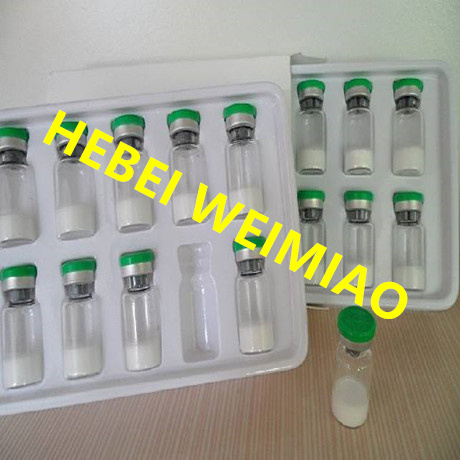
- +86-13363869198
- weimiaohb@126.com

Oct . 17, 2025 07:40 Back to list
High-Purity Pharma Intermediates | GMP-Grade & Custom
Inside the Supply Chain of GLP‑1 pharma intermediates
If you’ve worked in peptide development lately, you’ve felt the surge. GLP‑1 analog projects are multiplying, and reliable building blocks have become make‑or‑break. I’ve been talking to procurement leads and bench chemists for months; many customers say the market looks crowded, but only a handful of suppliers consistently meet analytical bars and paperwork expectations. To be honest, that’s where this product stands out: High Purity Peptides Powder Semaglutide Liraglutide (CAS 204656-20-2).
Trend-wise, sponsors want shorter lead times, clean impurity profiles, and customization without MOQ drama. And yes, strong chain-of-custody plus door-to-door logistics—because nobody wants a shipment stuck at a border. In fact, the practical details matter as much as the chemistry.

Product snapshot and specs
High Purity Peptides Powder Semaglutide Liraglutide, CAS 204656-20-2 — supplied from Room 1727, Dongyiyuan International, Xinyi Road, Shijiazhuang, Hebei. Payments accepted: Bitcoin, Western Union, T/T, Moneygram, PayPal. The team promises 100% safe shipping via special line with customs clearance and delivery to door (I’ve heard similar feedback from repeat buyers; surprisingly smooth for sensitive goods).
| Parameter | Specification (typical) |
|---|---|
| Appearance | White to off‑white lyophilized powder |
| HPLC Purity | ≥ 98.5% (typical batch ≈ 99.1%) |
| Identity | LC‑MS mass match; peptide mapping per USP method adaptation |
| Related Substances | Total impurities ≤ 1.0% (area‑norm) |
| Water (KF) | ≤ 5.0% |
| Residual Solvents | Meets ICH Q3C limits |
| Storage / Service life | −20°C, desiccated; shelf life ≈ 24 months (real‑world use may vary) |
| Docs | COA, HPLC chromatogram, LC‑MS; SDS; on request: TSE/BSE statement |
Process flow (how it’s made and qualified)
- Materials: Fmoc‑protected amino acids, PEGylated/lipidation handles (as applicable), Rink amide resin, HBTU/HATU, DIPEA, DMF/DCM.
- Method: Automated Fmoc‑SPPS with in‑process Kaiser test; on‑resin modifications; global deprotection and cleavage.
- Purification: Prep RP‑HPLC (C18), gradient optimization; pooling by area % and MS confirmation; lyophilization.
- Testing standards: Chromatography aligned to USP ; solvent limits per ICH Q3C; impurity assessment referencing ICH Q3A/B; documentation aligned with ICH Q7 expectations for API/intermediate manufacturing.
- Industries served: Innovator pharma, CDMOs, biotech start‑ups, CRO method dev teams.
Application scenarios
Use cases span reference standards, formulation stress studies, PK/PD research, and scale‑up feasibility for GLP‑1 programs. I guess the sweet spot is early tox/formulation where clean impurity profiles pay off. Teams working with pharma intermediates often highlight batch‑to‑batch consistency.
Customer voice: “Documents landed with the shipment, and purity matched the COA. We re‑ran HPLC—99.0%—and moved ahead with salt screening.” Another buyer mentioned the door‑to‑door line was, frankly, a relief.
Vendor comparison (quick reality check)
| Vendor | Purity (typ.) | Lead time | Docs | Certs (claimed) | Customization | Notes |
|---|---|---|---|---|---|---|
| Weimiaobio | ≈99% | Fast (stock or short run) | COA, HPLC, LC‑MS, SDS | ISO‑style QMS; ICH‑aligned | Sequence/scale options | Special‑line shipping, customs handled |
| Regional Trader | 97–98% | Variable | Basic COA | Limited | Restricted | May require re‑purification in‑house |
| Peptide Boutique | ≈99% | Moderate | Extended package | ISO 9001 | High | Often higher MOQ/pricing |
Customization and logistics
Custom sequences, alternative counter‑ions, and kilo‑scale discussions are available—useful for teams qualifying pharma intermediates before tech transfer. Payment flexibility helps: Bitcoin, Western Union, T/T, Moneygram, PayPal. Shipping uses a special line with customs clearance; yes, 100% safe delivery is the claim, and so far the anecdotal data I’ve seen backs it up.
Mini case study
A CDMO scaling a GLP‑1 analog reported moving from 97.6% to 99.2% purity by switching supplier and tweaking RP‑HPLC gradients. Impurities dropped below 0.7% total area; residual solvents met ICH Q3C Class 2 thresholds. That shaved a week off release testing and kept formulation screens on schedule—small win, big impact.

Standards and compliance
Analytical methods adapt USP where applicable; impurity and solvent controls reference ICH Q3A/B and Q3C. Manufacturing documentation aligns with ICH Q7 expectations for API/intermediate operations. Always verify your internal specs—every program is a little different.
References
- ICH Q7: Good Manufacturing Practice for Active Pharmaceutical Ingredients, ICH.
- ICH Q3A/B(R2): Impurities in New Drug Substances/Products, ICH.
- ICH Q3C(R8): Impurities—Guideline for Residual Solvents, ICH.
- USP General Chapter <621> Chromatography, U.S. Pharmacopeia.
- EMA Guideline on the quality of peptide medicinal products (EMA/CHMP/BWP/118264/2008 Rev.1).
-
BCM-95 Curcumin – Enhanced Natural Health Supplement | Weimiaobio
NewsNov.21,2025
-
Discover the Benefits of Super Bio Curcumin – Enhanced Absorption and Global Wellness
NewsNov.21,2025
-
Semaglutide Powder for Diabetes & Weight Loss - Hebei Weimiao
NewsNov.21,2025
-
Nature Made Turmeric Curcumin – Premium Natural Health Supplement for Wellness & Sustainability
NewsNov.20,2025
-
Discover the Best Turmeric Curcumin for Maximum Health Benefits | Weimiaobio
NewsNov.19,2025
-
Curcumin Para Que Sirve - Uses, Benefits & Innovations of Curcumin Supplements
NewsNov.18,2025